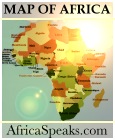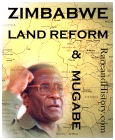How Whites Use Asians to Further Anti-Black Racism
Posted: Thursday, October 3, 2002By Tim Wise
It happened again, for what seems like the millionth time. Once again, in response to something I said about ongoing racism in the United States, someone (a white male, naturally) pulled out the all-too-common conservative race card (oh yes, they have one), which they believe disproves the existence of racial injustice. It sounds a bit like this:
"If racism is such a big deal in America, then why have Asians done so well? Why is Asian income higher than white income? Doesn't this prove that the problem with blacks is simply a lack of effort?"
Offered this challenge most recently by a disgruntled county employee in Minneapolis who resented having to sit through a speech I had given, I rolled my eyes, took a deep breath and considered the irony of the query (ironic because it always comes from whites who insist on their "color-blindness") before issuing my reply.
As I pondered my response, I thought about the Asian women working twelve hours a day in garment sweatshops both abroad and in places like Los Angeles to make clothes for people like this guy's kids; and I wondered, in what sense were they "doing so well?"
I thought about the Vietnamese youth in California who are profiled as potential gang members by police, for wearing the wrong clothes or driving in the "wrong" neighborhoods; and I wondered, in what sense were they "doing so well?"
I thought about the Asian families whose members have to put in 80 hours a week just to keep their heads above water; and I wondered, in what sense were they "doing so well?"
I thought about the Indian, Pakistani or Bangladeshi taxi drivers who endure crappy working conditions, customers who get pissy about their accents or "attitudes," and cops who are responsible for nearly eighty percent of all anti-South Asian attacks-often against hack drivers in places like New York; and I wondered, in what sense were they "doing so well?"
I thought about the demonization of Wen Ho Lee, and of Chinese American political contributors during the Clinton Administration; and the beating death of Vincent Chin; and the persistent refrain that the Japanese are "buying up America;" and I wondered, in what sense were they "doing so well?"
But instead of getting into all of those things, which likely wouldn't have been seen as responsive by my detractor, I offered the following.
First, I noted that the Asian "model minority" myth has long been a staple of white conservative race commentary, though rarely have members of the various Asian communities in the U.S. pushed the notion themselves. The genesis of this argumentation goes back to the 1950's and '60's, when prominent magazines ran articles lauding the "hard-working" Chinese or Japanese, and explicitly contrasting their "success" with the "failure" of African Americans.
Of course, none of these ever editorialized in favor of lifting the immigration restrictions that had kept Asian populations small in the U.S. from the 1880's until 1965, despite their respect for their favored persons of color. Neither they nor any adherent to the model minority image spoke out against internment of "hard-working" Japanese Americans during World War Two, or the killing of hard-working Southeast Asians during the Vietnam War.
Secondly, I explained that comparisons between blacks and Asian Americans overlook a number of differences between them. Whereas the African American population represents a cross-section of background and experience, the APA community is highly self-selected. Voluntary migrants from nations that are not contiguous to their country of destination tend to be those with the skills and money needed to leave their home country in the first place. As many scholars have found, Asian immigrants are largely drawn from an occupational and educational elite in their countries of origin.
Indeed, Asian "success" in the U.S. relative to others is largely due to immigration policies that have favored immigrants with pre-existing skills and education. As the Glass Ceiling Commission discovered in 1995, between two-thirds and three-quarters of the highly-educated APA community in the U.S. already had college degrees or were in college upon their arrival.
Thanks to preferences for educated immigrants, Asian Americans are two-thirds more likely than whites and three times more likely than blacks to have a college degree. More than eight in ten Indian immigrants from 1966-1977 had advanced degrees and training in such areas as science, medicine or as engineers.
Pre-existing educational advantages are implicated in Asian success once here; but they hardly indicate genetic or cultural superiority. After all, to claim superior Asian genes or culture as the reasons for achievement in the U.S. requires one to ignore the rampant poverty and lack of success for persons from the same genetic or cultural backgrounds in their countries of origin. There is no shortage, after all, of desperately poor Asians in the slums of Manila, Calcutta and Hong Kong: testament to the absurdity of cultural superiority claims for Asians as a group.
Indeed, ethnic Koreans in Japan, as well as the Burakumin there-a minority treated similarly to the Dalits in India-consistently underperform economically and educationally, compared to dominant Japanese. They are both the targets of discrimination, and although they are culturally and genetically indistinguishable from other Koreans or Japanese, they are consistently found at the bottom of Japanese society, and do worse than others in Japan, or than Koreans in Korea.
Not only does this debunk the notion of pan-Asian superiority in genes or culture, but it also suggests that a group's caste status influences group outcomes: much as with blacks in the U.S., whose position has been similar to the Burakumin and ethnic Koreans in Japan.
The primary argument put forth by those who push the model minority myth is that APA income in the U.S. is higher than the average for other people of color and even whites. As such, it is suggested, racial discrimination cannot be a significant problem any longer.
But the data that shows Asians doing better in terms of income than whites, is family and/or household data, not per capita income data. This is important because APA households and families tend to have more family members (thus, slightly higher incomes are made to stretch over more persons), and more earners per family (thus, it takes more family members in the workforce in order to earn only slightly more than whites, with fewer income earners).
The average Asian household size, for example, is 3.3 persons, compared to only 2.5 per household for whites. Likewise, Asian American families are more likely than white families to have two income earners, and nearly twice as likely to have three earners. So while Asian household and family income is higher than that for whites, the median income per person is lower for Asians: as much as $2000 less annually.
An additional reason why the average income of Asian families is higher than that of whites is because Asians are concentrated in parts of the country that have higher average incomes and costs of living. The three states with the largest Asian populations and a disproportionate share of the overall Asian population (California, New York and Hawaii), rank 13th, 4th, and 16th in terms of average income: all within the top third of states. Whereas 76% of all Asian Americans live in the higher-income regions of the West and Northeast, only 41% of whites and 28% of blacks are in these regions.
Over half of all APA's in the U.S. live in just five major U.S. cities (Honolulu, San Francisco, Los Angeles, Chicago and New York City): all of which have higher than average household incomes, and much higher costs of living than most of the U.S.
According to the Census Bureau, in 1996, median household income was about $35,500. But in states with disproportionate shares of Asians (NY and Hawaii, for example), median household income was $39,000 and $42,000 respectively. This means that APA median income will be skewed upward, relative to the rest of the country, but given cost of living differences, actual disposable income and living standards will be no better and often worse.
More importantly, claims of Asian success obscure the fact that the Asian American child poverty rate is nearly double the white rate, and according to a New York Times report in May of 1996, Southeast Asians as a whole have the highest rates of welfare dependence of any racial or ethnic group in the United States.
Nearly half of all Southeast Asian immigrants and refugees in the U.S. live in poverty, with annual incomes in 1990 of less than $10,000 per year. Amazingly, even those Southeast Asians with college degrees face obstacles. Two-thirds of Lao and Hmong-American college grads live below the poverty level, as do nearly half of Cambodian Americans and over a third of Vietnamese Americans with degrees.
Indeed, Asian "success" rhetoric ignores the persistent barriers to advancement faced by Asians relative to whites. On average, Asian Americans with a college degree earn 11% less than comparable whites; and APA's with only a high school diploma earn, on average, 26% less than their white counterparts.
When Asian American men have qualifications that are comparable to those of white men, they still receive fewer high-ranking positions than those same white men. Asian American male engineers and scientists are twenty percent less likely than white men to move into management positions in their respective companies, despite no differences in ambition or desire for such positions.
Of course, beyond the statistics, there are obvious points to be made. First, if whites truly believe that Asians are culturally superior and add to the quality of schools and workplaces, then why aren't these folks clamoring for a massive increase in immigration from Asian nations? Why not flood the borders, since we could all benefit from a little more Asian genius? Why not have white CEO's step down from their positions and let Japanese managers take their place?
Secondly, the whites who trumpet the model minority concept would be the first to object if Asian Americans began to bump their own white children from college slots, even if they did so by way of higher test scores and "merit" indicators. Just ask yourself what would happen if next year the top 3500 applicants to U.C.-Berkeley, in terms of SAT score and grades, happened to be Asian Americans, especially since there are only 3500 slots in the freshman class.
Would the regents allow the freshman class at the state's flagship school to become 100% Asian? Or for that matter even 80% or 70%? How would white Californians react to such a development, including those who praise hard-working Asian kids for their educational excellence and scholarly achievements?
How would white alums react if their favorite "model minorities" were suddenly seen as taking slots not from black and Latino youth, but from their own white children? To ask the question is to answer it.
And finally, to argue-as supporters of the model minority myth do-that Asians "have made it, so why can't blacks," is to misunderstand the issue of moral and ethical responsibility to correct the harm of wrongful actions.
Even if we accept the notion that groups victimized by racism can "make it" without assistance, affirmative action, or reparations, that would not deny (or indeed speak to in any way) the fact that society has an obligation to compensate the victims of injustice. After all, if my leg is blown off in an industrial accident, it hardly matters that many people with only one leg go on to succeed. The issue of compensatory justice remains, irrespective of what gains one can make without compensation.
I have little reason to believe that any of this made much difference to the individual who chose that day to trumpet Asian success as a way to denigrate African Americans. Given some of his other comments-that African sexual promiscuity was to blame for AIDS on the continent, and that he resented the "fact" that his black son (presumably adopted) has more opportunity in life than his white son (despite the fact that the former is unemployed and the latter in college)-his ability to rationally decipher much of anything seems doubtful.
Nonetheless, challenging the model minority myth is a worthwhile enterprise, especially when one considers how many decent, well-meaning individuals often fall for it.
Those who trumpet "Asian values and culture" (based on stereotypical understandings of both, not unlike the white guys who covet mail-order Asian brides for their anticipated "docility"), do Asians no favors. If anything, they set them up in a way that not only harms the groups against which they are contrasted, but in a way that harms Asians as well.
To be considered a group filled with math and science geniuses and passive, sensual, and willing female companions, not only objectifies Asian Pacific Americans, but results in a special stigma for those in the various Asian groups who aren't good in school, don't know how to fix your computer nor care to do so, or who don't fit the sexist stereotypes that are so comforting to Western male tastes.
The model minority myth, in other words, is a setup: a carrot offered to certain groups so long as they don't get out of line, assert their rights, strike for better wages, or try to determine their own sexuality. And as with all carrots, there is an even bigger stick, ready to throttle those who don't go along with the game.
Ultimately, justice and equity will remain elusive so long as whites feel no compunction about using one group of color against another group of color, in an attempt to make fools of both.
Tim Wise is an antiracist essayist, activist and lecturer. He can be reached at (and footnotes procured from) timjwise@msn.comPrinter friendly version
Send page by E-Mail

Previous Page | Zimbabwe Watch | Historical Views | Home
NOTICE: All articles are the copyright property of the writers. In accordance with Title 17 U.S.C., section 107, some material on this site is provided without permission from the copyright owner, only for purposes of criticism, comment, scholarship and research under the "fair use" provisions of federal copyright laws. Visit: http://www.law.cornell.edu/uscode/17/107.shtml for more details. If you wish to use copyrighted material from this site for purposes of your own that go beyond 'fair use', you must obtain permission from the copyright owner.










